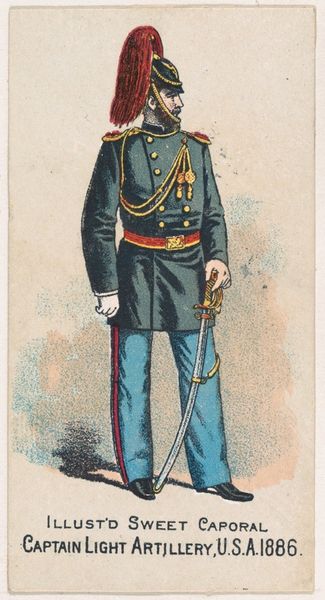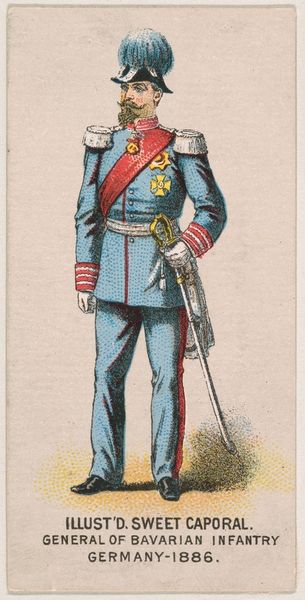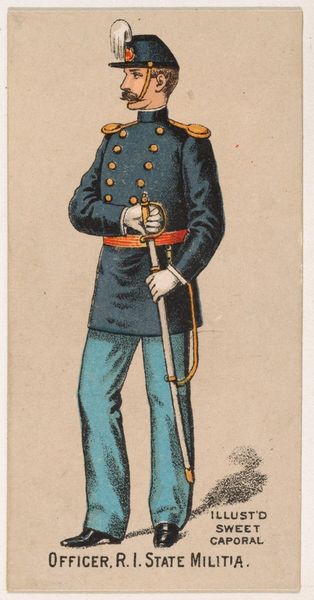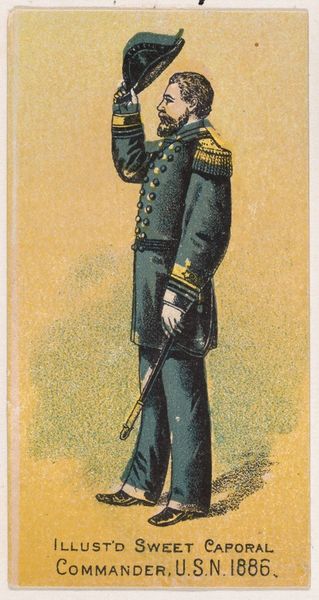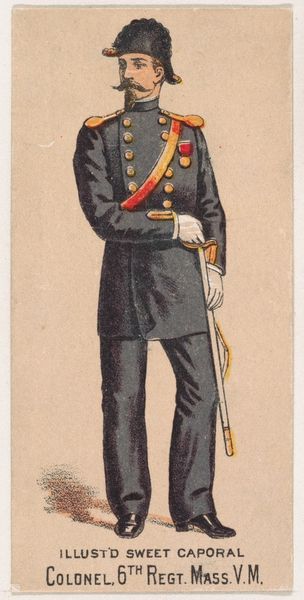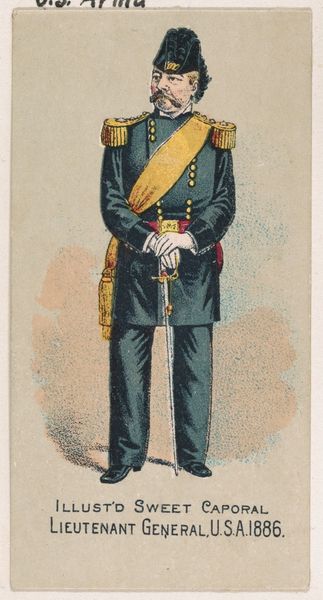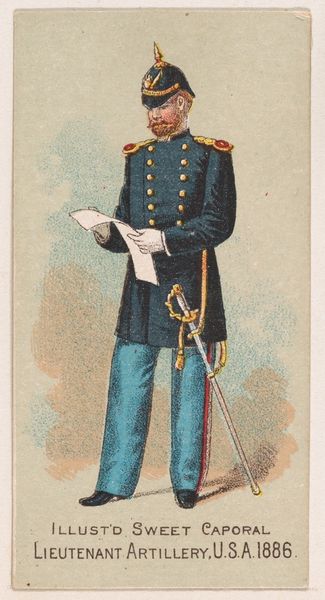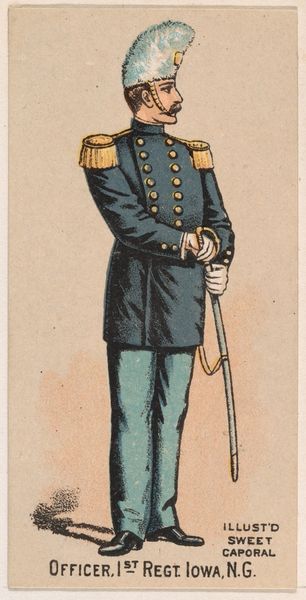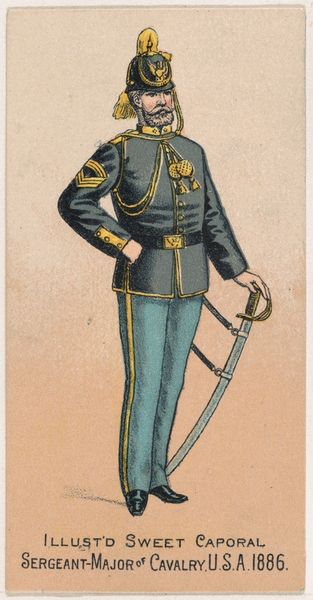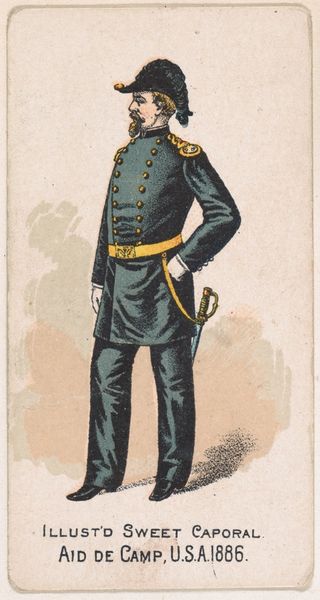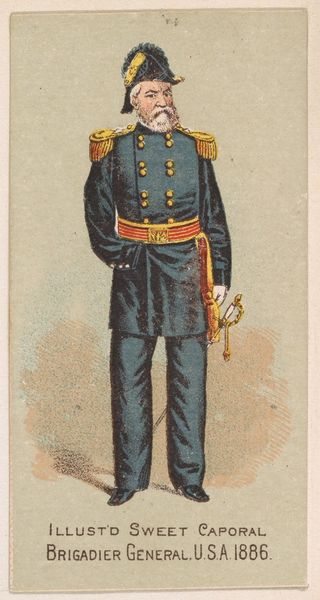
Captain, Signal Corps, United States Army, 1886, from the Military Series (N224) issued by Kinney Tobacco Company to promote Sweet Caporal Cigarettes 1888
0:00
0:00
drawing, print
#
portrait
#
drawing
# print
#
caricature
#
men
#
history-painting
#
sword
#
watercolor
#
profile
Dimensions: Sheet: 2 3/4 × 1 1/2 in. (7 × 3.8 cm)
Copyright: Public Domain
Editor: This is a print called "Captain, Signal Corps, United States Army, 1886," made in 1888 by Kinney Tobacco Company. It looks like an advertisement for Sweet Caporal Cigarettes. I'm immediately drawn to how rigid and formal the Captain appears; the artist really emphasized his military bearing. What strikes you when you look at this piece? Curator: Well, the first thing that grabs my attention is the uniform, laden with detail. Think about what such an image conveyed at the time. The meticulously rendered details—the epaulettes, the sword, even the feathered helmet— speak to a collective yearning for order and perhaps even imperial aspirations during this period. These weren’t just signifiers of rank; they were potent symbols. What emotions do these symbols trigger in you? Editor: I feel a bit disconnected. The image seems so posed, so…constructed. I guess it’s hard to relate to that level of formality today. Curator: Precisely! And that distance is important. Consider the role of military imagery in constructing national identity at the time. Tobacco cards, like this one, helped circulate those ideals, transforming them into readily consumable images. How does understanding the original context influence your present-day interpretation of the portrait? Editor: I see your point. It’s not just a portrait of an individual; it’s about selling an idea of military strength and national pride. That’s much more complex than my initial reaction. Curator: Exactly. Symbols always carry multiple layers of meaning, shifting and evolving with cultural memory. The key is to look beyond the surface and decipher what these symbols represented then, and what they evoke in us now. Editor: I learned how commercial images shape perception by reinforcing ideals of strength, class, and status in visual form. Thanks for sharing this enlightening interpretation. Curator: Likewise. Paying attention to symbols opens avenues into historical comprehension and contemporary experiences.
Comments
No comments
Be the first to comment and join the conversation on the ultimate creative platform.
